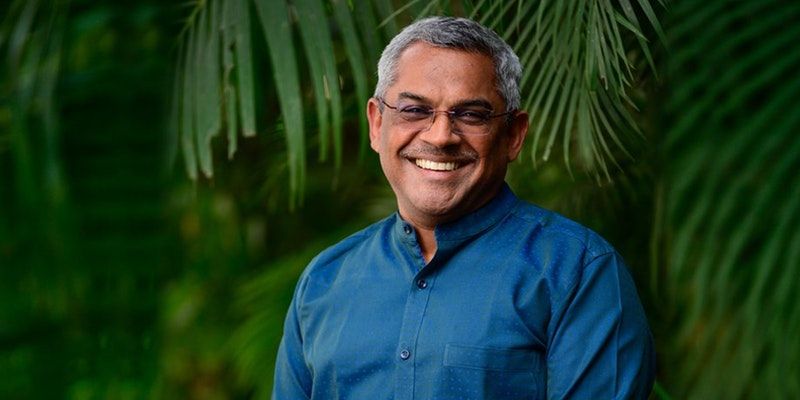
Sanjay Swamy, Managing Director and Co-founder at Prime Venture Partners
Sanjay Swamy, Managing Director and Co-founder at Prime Venture Partners, in his nine years as VC, has met several startup founders. However, the entrepreneur-turned-VC says that most meetings are poorly structured, poorly managed, and often do a disservice to the brilliance of a startup.
He says, “Quite often, I find myself having to look for a diamond in the rough when it really should be the entrepreneur, who should be doing a great job articulating their labour of love.”
In this week’s Prime Venture Partners’ Prime Knowledge Series, Sanjay explains how an entrepreneur can make a lasting first impression. He adds, “The goal of the first meeting is simple — to do just enough to get the second meeting quickly.”
Here are his top tips:
- Start the meeting on time. Sanjay says that founders should arrive 15 minutes early and set up the presentation, WiFi, and demo with the help of the admin.
- The best way to get the project ready is by Chromecast. “Don’t make statements like, ‘I have never used Chromecast’ and expect to pitch an artificial intelligence (AI) startup,” Sanjay says.
- Founders should figure out how to project their mobile demo. Sanjay says that more than 10 years ago, he used to project his demo on Nokia phones and it was charming, now, it is just ‘ugh’ when one doesn’t do it.
- The founder should always control the meeting. They should set expectations on how they plan to use their time.
“Remember, VC’s see this meeting as a proxy for how you are going to lead a team and customers or partners. A VC pitch is a sales meeting,” Sanjay adds.
Next, a startup founder must follow the basic rules of presentation flow.

Image Source: ShutterStock
Presentation flow
These tips hold true for a VC meeting or a customer sales meeting and most other meetings too.
- Start with questions. One should get to know their audience. The entrepreneur should ask the VC’s why they are different from others.
“Ask the VC’s if they’re familiar with this space and what they like and don’t like about it. Try and understand who is your friend in the room and who is the one you need to convince,” Sanjay says.
Do the basic things right.
- Founders should first tell the story of their background and it should be crisp.
- Next, they should talk about the background of the team.
- Sanjay says that as an investor, he likes to know about the entrepreneur’s motivations, their prior experience with each other, and how and why the founders of the team came together.
- Founders should also explain the motivations behind doing what they are doing.
- On some days, investors are more chatty than others. During such cases, founders should indulge and be ready for a conversation, a discussion, or even a debate. And they should enjoy it, rather than getting defensive.
Dive into your key topic. Founders should tell a logical story and showcase their excitement and passion for what they are doing.
- If founders have a live demo, they should show the KISS demo first, which essentially illustrates the fundamentals of what a startup is trying to solve.
- Founders should finish the presentation within 20 minutes. This would allow them plenty of time for discussions.
“Do not take 50 minutes for the presentation — in the first meeting, nobody needs the details, just the highlights,” says Sanjay.
- Founders must take notes and summarise the key takeaways before they leave the room. Post presentation, they should also send an email with the summary of the meeting by the end of the day. “Not the next day — the same day,” Sanjay emphasises.
If there is any data or additional information requested by the VC’s, founders should mention them and send the details by the end of the day, if they can furnish the information. “Please don’t miss the expectations you set,” he adds.
- At some point, stop pitching. When founders get the VC excited enough to ask questions, founders should question them back on how a VC can help. These questions should ideally be if they have worked with a similar company or opportunity before, give examples of those, etc.
“Effectively, now it is your turn to be the buyer and the VC’s turn to explain/justify why they are the right partner for you,” Sanjay says.
If the VC is excited about the opportunity, they will follow up. If one is convinced, the positive surprises should be kept later. In Sanjay’s words: “Do not sell beyond the close.”
- One should never bluff during a VC meeting.
“If you genuinely have a timeline you are working toward, let them know, but never try to bluff your way to a funding round or commercials — it rarely happens! The scars and reputation risks to you as a founder are far higher,” Sanja says.
Most importantly, cover the answers to all the key questions.
- What problem are you solving?
- Who is the customer?
- Who is the beneficiary of your service?
- How big is the problem?
- Why are you well or best suited to address this?
- Why are you passionate about addressing the problem?
- Why is your solution 10x better than the state-of-the-art?
- How will you distribute the solution?
- How will you monetise your solution?
- What stage are you at?
- Who else is doing this or could do this?
- Why do you think you will win?
- What will it take to get to the next stage?
- What will it take to get to 10x from that point on?
While this may sound like a long list, all of these points are important to articulate in a short presentation. And when one is clear in their flow, the presentation can be wrapped up in 10 minutes.
“Remember that the goal of the first meeting isn’t to convince them to fund you then and there. The goal of the first meeting with a VC firm is only for them to immediately send an email or WhatsApp message to their partners saying: ‘Just met this amazing entrepreneur and company doing XYZ — I’d like one of you to meet them soon, this could be hot!’” Sanjay explains.
(This piece originally appeared on Sanjay Swamy’s LinkedIn page. YourStory is republishing it with minor modifications).
(Edited by Saheli Sen Gupta)
Want to make your startup journey smooth? YS Education brings a comprehensive Funding Course, where you also get a chance to pitch your business plan to top investors. Click here to know more.
Link : https://yourstory.com/2020/08/lasting-first-impression-startup-founder-investor-pitch-meeting
Author :- Debolina Biswas ( )
August 23, 2020 at 06:25AM
YourStory


